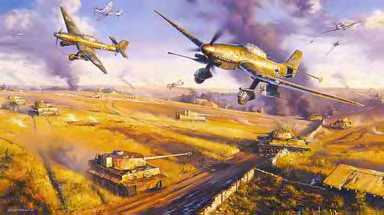
By Charles "Chuck" Myers
19 August 2001

By Charles "Chuck" Myers
19 August 2001
"'Fast moving aircraft are not designed to support ground troops,' said Army Sgt. First Class Frank Antenori. 'As much as the Air Force and Navy would like to think that, fighter aircraft that travel at speeds can't slow down to identify the targets,' he told National Defense......
He said the Air Force A-10 attack plane and the Army Apache helicopter are the ideal platforms for close air support, best suited to SOF missions. Air Force F-16s and Navy F/A-18s are much too fast to be able to properly identify targets, he said. 'The problem is getting the pilots at the altitudes and speeds that they are flying to be able to ID the targets,' he said.
A-10s and Apaches do a much better job, because they can move at a slower speed. 'With fast movers, I never had any success," he said.'
"Fast Jets Not Ideal Choice for Close Air Support" by Roxana Tiron National Defense magazine, April 2004
Part I: What have we lost and how did we lose it?
"Air support puts new zest and determination in our line in a way no amount of artillery fire before our eyes can do. The men see our pilots; they watch them come in low and take terrible chances. It makes them want to go forward again. The effect is as if they were drawn by a magnet."
A Battalion Commander of the 1st Marine Division, made this descriptive statement following their withdrawal from the Chosin Reservoir (quoted in the Marine Corps Gazette page 79, November 2000). At the time of his observation, Army and marine forces were under extremely heavy pressure from 250,000 Chinese troops who had intervened against General MacArthur's U.N. forces which, in November 1950, had been on the brink of victory in North Korea. The battalion commander's description of air support reminds one of the old WWII movie "Flying Leathernecks" where John Wayne and his Marine F-4U Corsair pilots attack Japanese infantry and armor at eyeball level while our GI's cheer them on.
Such flying was not uncommon by pilots of both allied and enemy air forces during WWII, Korea and some stages of the war against North Vietnam. Unfortunately for our infantry, it has gone out of style for a number of reasons. The popular excuse is that the air defense threat has become so ferocious as to preclude flying above enemy ground forces at altitudes below 10,000 feet. In Korea and Europe, the sky is overcast at two to three thousand feet over forty percent of the time. Knowing that the visible presence of tactical aircraft will be curtailed by an overcast sky above the battlefield is good news to enemy commanders who can be expected to exploit this factor to their advantage. Also, the possibility for overcast skies may constrain plans for offensive action by our ground commanders, knowing that they can not count on a full measure of combat air support should they need it. "Aerial Battlespace Beneath the Overcast" has been important in the past and probably will continue to be so.
Flying low over a battlefield has always been dangerous business because ground troops possess large numbers of guns varying from pistols to high rate of fire machine guns and medium caliber anti-aircraft guns. Remember how WWI ace, Baron von Richtofen ("Red Baron") was killed. A typical division may have as many as 10,000 automatic weapons. Troops are taught to create a hail of bullets above the battlefield for aircraft to fly into and they seem to enjoy the opportunity to shoot at airplanes. Most hits are received from the forward hemisphere and below. And, the faster the airplanes fly, the greater will be the depth of penetration of projectiles into their structure. When they concentrate their fires, Soldiers can make the sky virtually uninhabitable up to at least five thousand feet. If one must make passes over a battlefield, experience has taught that it is best to fly above 10,000 or below 100 feet. Flying very low, especially through rolling terrain or urban areas, minimizes the possibility of an air defense weapon being pointed at and tracking a passing aircraft.
Attacking ground forces beneath an overcast sky was especially hazardous on both the Eastern and Western Fronts in Europe during WWII but tactical pilots managed to be effective in spite of seemingly ever present gunfire. Has the gun density or lethality increased during the past fifty years? The problem lies not with gun density and lethality but rather with the character of our aircraft. Following 1945, the aircraft industry was directed to design for nuclear vice conventional war. For nuclear war, exposure to ground fire is not a problem worthy of consideration. Attack and fighter aircraft for the next two decades were designed primarily to deliver nuclear bombs to key targets deep in enemy territory under all weather conditions. Attacking enemy ground forces was not to be a part of their repertoire. During this period, airforces of the world spawned families of aircraft such as the USAF F-100 series including the TFX F-111, Navy F-4, A-3J, A-4, A-7, British Harrier, Lightning, Tornado, French Mirage, Russian Migs, etc. with no design consideration for vulnerability to ground fire. The design emphasis was on maximizing range and speed, and airplanes were especially tailored for high-low-high mission profiles. Nuclear warfare design criteria contributed heavily to the losses of such airplanes as the F-105, F-4, F-8, F-111 and A-6 in Vietnam. Typical deficiencies included a lack of fuel tank self-sealing, lack of redundancy of control arteries, lack of protection for the pilots, use of highly flammable hydraulic fluid and lack of protection for the very tender jet engines to name just a few examples. The yield of such design habits, appropriate for nuclear war, was low tolerance to bullets and shrapnel as demonstrated by the high performance combat aircraft employed against Vietnam.
Our 1960's air forces were trapped into employing nuclear war aircraft in a fierce conventional engagement for which the DoD had not prepared. In terms of vulnerability, these aircraft were less than ten percent as tolerant to ground fire as aircraft such as the Army Air Corps P-47 Thunderbolt, British Hurricane/Typhoon, the German Stuka and FW-190 or the heavily armored Russian Stormovik.
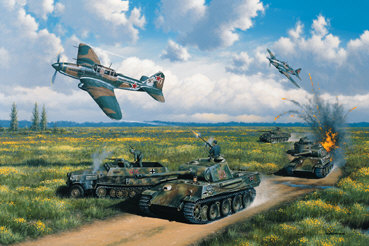
38,000 IL-2 type aircraft were built in WWII, key to victory on the Russian Eastern Front!
An anomaly occurred during the late sixties due to concern over the attrition of our tactical aircraft in Vietnam and projections of the possible disaster our pilots would face beneath the overcast in a war against the USSR in Europe. Out of this concern came the USAF AX program which produced the A-10 Warthog, the first U.S. airplane actually designed for the dirty mission of attacking ground forces and especially for killing tanks. Because the AX aircraft would be used primarily in support of ground troops, the U.S. Army had significant input into the necessary characteristics of the aircraft. The AX needed
The design emphasis was on survivability through reduction of vulnerability to ground fire. Although it turned out to be much larger and less agile than desired, it was a major improvement over the nuclear age combat aircraft and serves as an indicator of what might be accomplished if a follow-on effort was sponsored by the DoD. Touted as a single-purpose aircraft, its loiter performance, ease of maintenance and toughness led to its broad application in Desert Storm. The Russians created the armored SU-25 Frogfoot CAS aircraft with an uncanny resemblance to the losing Northrop A-9 AX candidate. SU-25s have an excellent combat record in Afghanistan and Chechnya, and been almost impossible to shot down.
In these latter aircraft as well as the fifties vintage Navy/AF A-1 SkyRaider, the pilot sat behind a massive piston engine which continued to operate in spite of significant damage and served as frontal armor protection for the pilot during attacks against ground targets. The engine of the P-47 also served as a battering ram making it possible to crashland/belly-in through a forest or a building and walk away from the wreckage ---- there are no such aircraft in any major airforces today. Considering the relative vulnerability of the high-performance jet fighters which populate the worlds airforces, it is understandable that flying about at lower altitudes above a battlefield is deemed foolhardy.
"To perform in close coordination with ground troops, in a high intensity small-arms fire environment, and for extended periods of time with a high payload. The requirement for fast response to Army needs is to be met three ways: 1) the aircraft will have short takeoff and landing (STOL) characteristics and rugged landing gear which will permit it to operate from unimproved landing fields; 2) it will have a long loiter time, giving it the capability to remain over the battlefield where it will be on call at a moment's notice; and 3) the aircraft will have a rather high cruise speed to allow rapid deployment from home field to battle area, or from one battle area to another. The AX should be able to take off and land from 2,000-foot runways."
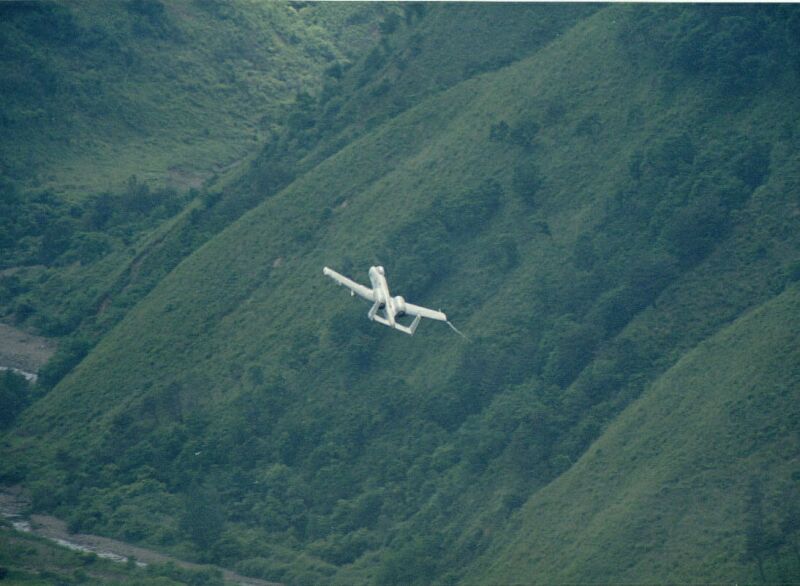
Flying beneath an overcast sky so as to discover and attack the enemy is generally discouraged and sometimes forbidden, even with the worlds least vulnerable jet airplane, the Warthog. [1] In addition to the gunfire threat, pilots are led to believe that the enemy has deployed a virtual "death-dot" shoulder fired missile which Soldiers merely have to point and shoot to achieve a kill. In reality, its not that easy for the air defender (who is also interested in his own survival), especially if the near sky overhead is dominated by aggressive pilots who are not only providing air support but concurrently hunting and attacking air defense elements. Of course, in view of the inadvisability to expose our inappropriate aircraft to gunfire, the air defender is unlikely to face such an air threat.
"Leveraging technology can relieve pilots from having to venture below cloud level thus putting them in greater danger from anti-aircraft and small caliber gunfire. The United States is capable of producing the technologies to see through the clouds and there are lots of techniques you can use to do that. Pilots should not have to venture below the clouds unless our troops are in jeopardy --- when our troops are in jeopardy, we will"
General John Jumper, USAF, Commander ACC as quoted by Defense Week 17 April 2000 following a presentation on Capital Hill regarding the need for the F-22.
In one sense, the overall threat faced by U.S. pilots at all altitudes has subsided since WWII. The most disruptive and worrisome air defense element hardly even exists in the world today, that threat is enemy fighter interceptors flown by experienced and competent fighter pilots. For perspective, the top ten German Luftwaffe aces shot down a total of 2552 aircraft. The leader among that band of killers was young Eric Hartman with 350 victories. To further remind of our experience: in WWII, the U.S. Army Air Force lost twice as many airmen in three and one half years of combat operations than the total number of men killed (air and ground) during ten years of fighting in Vietnam. And, the losses seldom caused a significant alteration of air campaign plans. Aircraft attrition rates overall for our most prominent military actions were: WWII-9%, Korea-2%, Vietnam-0.5% and Desert Storm less than-0.3%. Additionally, in terms of total losses, aircraft lost due to mishaps, collisions with each other or the ground, fuel exhaustion, etc. in SEA exceeded the number shot down. The personal attrition rate for one who may have been the worlds most aggressive attack pilot to survive WWII, Luftwaffe Colonel Hans Ulrich Rudel, was slightly over one percent having been shot down 32 times while flying over 2500 sorties on the Eastern Front, primarily against the Russian army.
From the perspective of a war planner, perhaps attrition should be considered within a framework that includes the aircraft, pilots and ground elements as a package. Should the survivability of pilots, because of their perceived value and scarcity, be considered independent of the total engaged force? Imagine what would have happened to the Army ground forces engaged in the desperate battle at Ia Drang in 1965 had there not been experienced and aggressive pilots attacking the enemy at below tree top level [2]. Also, consider that the air tactics and techniques required to be effective under such circumstances require frequent practice with the ground component because the skills of both are perishable. Is it rational to assume that pilots can practice high-altitude stand-off tactics for years and on the spur of the moment, descend and engage in a desperate fight at low altitude beneath an overcast and expect to survive and provide effective air support? Frequent and effective interplay of the air/ground team is a major contributor to survivability of the total force. Experience has shown that in "war", pilot and grunt survivability are intertwined with victory or defeat.
"There were about 250 men of my battalion on the ground and still functioning. Casualties were beginning to pile up. I fleetingly thought of a predecessor of mine in the Seventh Cavalry, LTC George Armstrong Custer and his final stand in the valley of the Little Big Horn, eighty-nine years earlier. I was determined that history would not repeat itself in the valley of the Ia Drang. We had one thing George Custer did not have:--fire support."
We Were Soldiers Once and Young by LTC Hal Moore and Joe Galloway. In this situation, external fires, especially from the A-1s, saved the unit from annihilation. The presence of maneuver air support can reduce the probability of having such situations develop to the point where "save the day" actions are necessary.
One of my observations that relates to the proposed MAS with the COP JAAT is that the the Seventh Cav force that was inserted had never worked with/practiced with a "virtually organic" air support element. Under my MAS concept, key members of the Fixed-wing JAAT elements would have attended the mission prep briefing and would have been applying recce fires as the lift force was proceeding to the landing zone. They would have also been performing local recce and been in position when the contact was made. The North Vietnamese would never have been able to organize the attacks that resulted in a near Little Big Horn. And the total operation would probably have killed hundreds more enemy with little loss of 7th Cav. Under our concept, we don't wait until grunts are in trouble to call for support ---- its always there as part of the team. With our presence you would never need "bail me out" CAS or ARTY, even if the sky was overcast. You would not be supported by "strangers".
The introduction of nuclear weapons in 1945 reinforced a long held view that the best use of air power is attacking those critical strategic nodes which a military commander chooses to believe are essential for his enemy to continue fighting. Although the use of nuclear weapons was unlikely, the orientation of air forces toward deep strike established a mindset and doctrines which carried over to the employment of air-delivered conventional weapons. Nuclear warfare thinking proved to be an obstacle to maintaining effective conventional air warfare doctrine. Existing and proposed fighter/attack airplanes, for reasons discussed above, are not optimum for supporting ground forces, especially in the direct attack mode of WWII. And, generations of pilots, trained to perform deep strike interdiction with these aircraft and lacking combat experience in direct air support are unlikely candidates to recover the lost art described in the opening statement of this paper. Since the Nation lacks appropriate resources for such combat flying, revival of the mission is unlikely to occur without a major effort by the benefactors of such services, the ground forces. Change can only occur if current ground component commanders speak out on behalf of the grunts who will be confronted with classical combat situations in the future.
Where are the ground combat veterans who might testify as to the value of and need for the air support that was once available? They were sparse in number to begin with and most are retired or deceased. The strategic strike focus of the fifties dominated the minds of air planners during the Vietnam War. Could this account for the fact that direct air support was provided for only ten percent of SEA ground actions? Perhaps "out of sight, out of mind" may account for the fact that ground force commanders seemed content with this meager contribution by air. Considering that U.S. did not win in Vietnam, it seems fair to ask how it might have gone had the ground forces requested and received effective air support for say eighty instead of ten percent of their missions? Accompanying this question is the observation that the resource consuming effort of bombing North Vietnam and attempting to interdict the flow of supplies into the South failed to accomplish its objective. These thoughts lead to questions like: (1) Lacking personal experience with vintage air support, to what degree can current ground commanders visualize its potential value and (2) Might it help to conduct experiments to illustrate the possibilities for a revived form of air support which can exploit projected technology and innovative design?
Part II: How might TacAir contribute to evolving ground warfare concepts ?
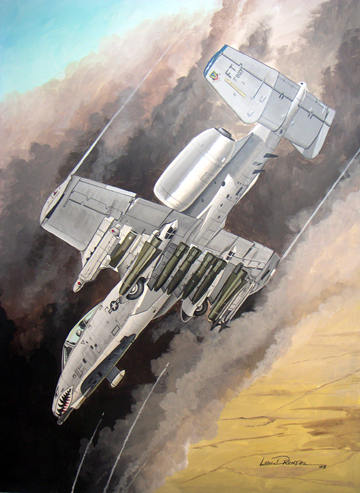
In seeking the answer to this question, the author interviewed scores of ground combat veterans from three wars and other military events in addition to many who are involved in thinking about a range of possible future conflicts. Concepts such as STOM (ship-to-objective maneuver), DMO (dominant maneuver operations), JSF (joint strike force) and RDO (rapid decisive operations) all portray insertion of light forces into enemy territory. Evolving doctrines portray Light Forces operating deep in enemy territory relying on information dominance and quick decisive actions to keep the enemy off-balance. Light Force concepts emphasize reliance on external fires and various forms of "reach back" assistance. Also popular among "advanced thinkers" is the term "effects based assessment" (EBA) for evaluating various external fires alternatives. Encouraging troops to a higher level of aggressive conduct in the face of adversity would clearly be a positive "effect". The testimony of the Battalion Commander in the opening paragraph of this paper illustrates how the visible direct support by skillful pilots can serve to lift the spirits of the troops at a critical time. Is this not an example of the ultimate in terms of "effects based" value.
Ground Combat Elements (GCE) performing three dimensional maneuver, STOM or JSF operations will need all the external help they can get and without incurring additional logistical or manpower burdens. Interviews with scores of combat veterans (retired and active) reveal the need for Continuous Overhead Presence (COP) of perceptive air crews who are working as an integral part of the GCE. The expressed need is for a virtually organic airborne partner who understands the commanders intent and can provide the following functions with minimum interruption to ground maneuver:
Part III: What is the nature of the desired air support?
In this paper, the package of desired services listed above is named Maneuver Air Support (MAS). MAS is very different from CAS (close air support) which has become a highly controlled alleged air-substitute for artillery fire and will, in the future, be delivered from remote locations well beyond the grunt's view on the battlefield. COP and MAS are provided by combinations of aircraft flown by specially trained crews executing variations of Joint Air Attack Team (JAAT) tactics tailored to exploit the low altitude region that has been vacated for missions such as close air support and battlefield air interdiction. MAS is tailored to provide visual and continuous support of Light Forces employing three dimensional maneuver warfare concepts to accomplish limited military objectives. Most important, MAS will be available even if the ground action is taking place beneath an overcast sky.
MAS mission pilots and aircraft would routinely perform as an integral part of a combined-arms maneuver warfare team. These specially trained pilots (all FAC qualified) must be perceptive aerial observers who are fully informed regarding their assigned ground force commander's intent and would be in constant contact with him. Most important, MAS designated units become virtually organic and satisfy the expressed need for air presence, as emphasized repeatedly by combat experienced infantry officers. Experience with this mode of operation has proven effective as described by various pilots who flew OV-1 Mohawks and OV-10 Broncos in support of both marine corps and U.S. Army ground forces during Vietnam and Operation Desert Storm. Similar favorable experience was accumulated with A-1 Skyraiders and F-4U Corsairs in South East Asia and Korea. Also, variations of this mission were popular and effectively flown by pilots of P-47's in support of Patton's Third Army as it raced across France in 1944 as recounted by David Spires in "Patton and Weyland: A Model for Air Ground Cooperation". There, the mission was sometimes referred to as "column cover".
COP of MAS pilots employing adaptive-cooperative command & control (C2) techniques would provide immediate response to the menu of needs of a ground combat element (GCE). They could also serve as an informed airborne relay to expedite the response and enhance the performance of other air units providing CAS whether it is to be delivered from above or below the overcast. Of major importance is that MAS pilots would be proficient at providing spontaneous light fires to erase small problems which otherwise might escalate to an emergency status requiring artillery and massive CAS fires to save the day. An applicable bit of wisdom here is: "a stitch in time saves nine".
The expressed need for COP to support future light forces destined to execute three dimensional maneuver warfare concepts, compels the DoD to explore possibilities to include fielding a dedicated aircraft such as an ASP (agile-survivable-potent). In general terms, an ASP might be described as a small, very agile and survivable cross between a Bronco and a Warthog (an "OAX") that could fly either from a maneuver element dirt strip forward arming and refueling point (FAARP) to avoid fixed-site air base targeting or an aircraft carrier without using catapults or arresting gear (as did the Bronco). But of course, to be effective at MAS, the pilots of these birds must be specially trained and routinely practice with a ground element and other components of a joint air attack team (JAAT). They, with specialized equipment and weapons, may be the keys to recovering and exploiting the lost battlespace beneath an overcast sky.
MAS tactics and flight techniques can be expected to evolve from exploratory exercises. Here, a sample of possible aerial activity is offered to aid in visualization of a concept of operations. When in support of a battalion sized ground combat element (GCE), an airborne JAAT might consist of three to five ASPs and two or three AH-64 Apaches linked and working in the terrain flight environment (between the ground and two hundred feet) with AC-130U Spooky in orbit at 12000 feet. The JAAT, while flying in mutual support of each other, is simultaneously seeking, gaming, suppressing and killing enemy air defenses while applying light fires against enemy ground forces as desired by the GCE commander. Also, ASPs assist with coordination of artillery and control of CAS when either is needed and available. And, during three dimensional operations, this group will fly "shotgun" escort for insertion elements employing V-22s or compound or regular configuration helicopters.
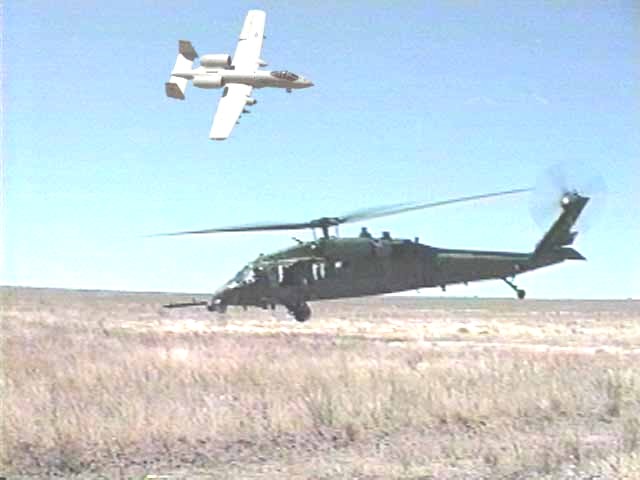
ASP pilots, while hunting and providing local "recce-by-fires" in a high threat zone, would avoid rising above the terrain mask for periods in excess of 10 or 12 seconds and abstain from steady heading flight in excess of five seconds; such tactics minimize susceptibility to air defenses.
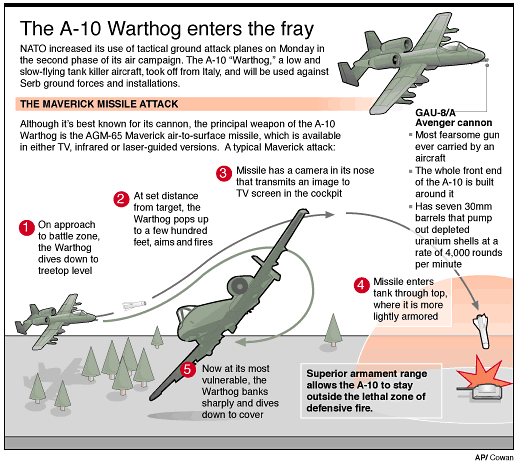
Experiments with such tactics over rolling terrain have demonstrated that ground observers are seldom able to point at and track the aircraft for periods in excess of five seconds, far short of the time required for a missile to be launched and guide to the target.
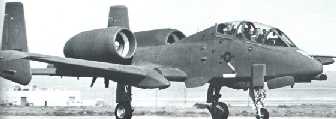
The nature of such flying plus the observation and communications burden may well dictate the need for a second air crewman, probably a ground combat officer. Night MAS can feature AC-130U Spooky (gunship) above the overcast, coupled with AH-64D Apache Longbow and UCAVs below. Of course, both night and day tactics will vary with the terrain, weather, threat and the tactical objectives. As in the past, definitive forms of the equipment and the techniques for effective application are best determined from exercises which afford opportunities to couple innovative technology with variations in air-ground team tactics.
Part IV: What is the character of an ASP?
One response to this question is to imagine the architects creed, Form Follows Function, guiding an unbridled creative aircraft design genius --- herein lies the key to recapturing the lost battlespace beneath the overcast. A vivid picture of the "functions" of the MAS mission can be had by reading USAF Major Marshall Harrison's fascinating account of his experience as an OV-10 airborne FAC in Vietnam and Cambodia; it is titled "A Lonely Kind of War". Combine Harrison's book with that of Colonel Rudel's "Stuka Pilot" and mentally ponder aircraft characteristics such as: light, agile, quick, tough, resilient, potent, survivable, long loiter, austere, and affordable. Emphasizing these attributes in conversation with innovative designers will likely yield candidate aircraft yet unimagined by most aviators. As examples, Bert Rutan's ARES (Agile, Responsive, Effective Support) and the Lockheed ATLAS (Anti-Tank Light Attack System) featuring the GE Unducted Fan engine and pictured in figures 1 and 2, were products of such discussions which occurred over a decade ago.
Pilot survivability is a major mission consideration and because there would be frequent exposure to air defenses, the demand for vulnerability reduction will drive the design toward aircraft which, even when critically damaged, provide a high probability for pilot survival. In wartime, survival and recovery of pilots is especially important because they are a critically in-short-supply resource that must be returned to action, hopefully, within hours of being shot down. We are reminded that it was the loss of experienced pilots, not their aircraft, that was the downfall of both the German and Japanese airforces.
Such a perspective presents an opportunistic challenge to an aircraft designer both from the standpoint of minimizing aircraft vulnerability and pilot injury. Also, designers are challenged to moderate cost so that the aircraft that can be procured in such quantities as to provide "on-hand" replacements. An additional consideration is that even though an aircraft has low vulnerability, it may incur damage such that it is not safe to return to battle without undergoing time consuming repair. Here again is a reason to provide spare aircraft so the pilot can return to the fight in a fresh machine. In one sense, such a capability increases total force survivability because it improves the prospect for victory.
It is crucial to recognize that War consumes vast quantities of equipment. Ergo, there is concern that the evolving U.S. "token" air forces may be insufficient for War and, at the same time, too expensive for employment in military political gymnastics.
Part V: Beyond CAS: the Possibility for Vintage Air Support
What lies beyond CAS? Is it possible to create a form of air support that surpasses the best that was available in the past? Exploitation of available technology, the talents of modern airmen and operational vision of ground commanders can evolve the combined arms performance needed for battle dominance with three dimensional maneuver warfare. Continuous Overhead Presence (COP) of variable mix/match JAATs is a realistic possibility. The path to such capability begins with experimentation.
To quote Socrates: "One must learn by doing the thing, for though you think you know it, you have no certainty until you try."

Fig.1 ARES by Scaled Composites, Inc.
Low IR and Visual Signatures, Gun: 25mm GAU-12/U Gatling, Redundant Controls, Tough, Prototype Flow in 1989; Privately Financed

Fig.2 Sample ATLAS (Anti Tank Light Attack System) Design
Another mythical (hopefully will fly one day) CAS/MAS/COIN aircraft that looks like Chuck Myers' ASP is the SM-27 MACHETE
In Israeli AF desert camo
Carlton Meyer, brilliant futurist of G2mil.com found this!
Good work, Carlton!
Part VI: New MAS Mission: Anti-UAVs
Comments appreciated via email: cmyersaero@aol.com or cmyers@ida.com
Draft: 29 August 2001
Suggested Readings
"A Lonely Kind of War" by Marshall Harrison. Presidio Press
An OA-10 FAC in Vietnam.
"Air power for Patton's Army: Forging a legendary air-ground team" by Spires, David N. Spires
Library of Congress Cataloging-in-Publication Data
Patton's Air Force: Forging a legendary air-ground team
Originally published: "Air power for Patton's Army", Washington, D.C.: Air
Force History and Museums Program, 2002
Includes bibliographical references and index. (316 pages) ISBN 1-58834-087-2
1. World War, 1939-1945 Aerial Operations, American.
2. United States Army Air Forces. Tactical Air Command, 19th History.
3. Close air support
History 20th century.
4. United States. Army. Army 3rd History.
I. Title. D790.S65 2002b 940.54¹4973--dc21
By special arrangement with the U.S. Air Force, this publication is being offered for sale by the Smithsonian Institution Press, Washington, D.C.
For permission to reproduce illustrations appearing in this book, please correspond directly with the U.S. Air Force. The Smithsonian Institution Press does not retain reproduction rights for these illustrations individually or maintain a file of addresses for photo sources.
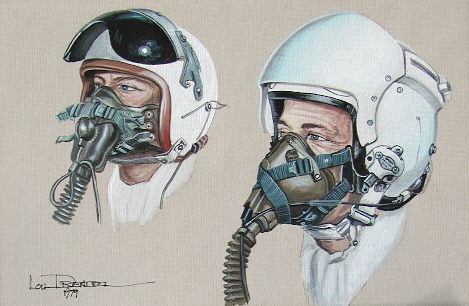
Mr. Myers served as the Director for Air Warfare in the Office of the Secretary of Defense between 1973-78 during which time he launched Project Harvey which later became known as the "stealth" program (see The Five Billion Dollar Misunderstanding by James Stevenson, Naval Institute Press). Chuck had the extraordinary experience of playing an integral role in creation and development of nine front-line military aircraft: the F-14, F-15, A-10, F-16, F-18, EF-111, EA-6B, F-117 and the B-2. While in DDR&E, his projects included Pershing, Tomahawk, Advanced Sparrow and Sidewinder, HARM, IR Maverick, Laser Guided Bombs and AMRAAM.
In 1961, Mr. Myers created Aerocounsel, Inc., a mini-think tank to serve the aerospace community. Since then, he has consulted or worked for 16 aerospace companies, NASA, FAA, GAO, CNA, IDA, OMB, CSIS, DoD, USAF and USN. During the past forty years he has written and lectured about various military missions including air superiority, close air support, fleet air defense and fire support for ground forces. In 1978, he began the effort which led to reactivation of the Iowa Class battleships and much later, a Navy proposal to create a Battle Surveillance Airship to assist in air defense against the "sea skimmer" cruise missile threat. This was coupled with briefings on his Littoral Warfare study which illuminated the need for a dedicated "fire support ship". During 1985-2000, Aerocounsel, conducted workshops on tactical air support for maneuver warfare. He chaired forums sponsored by COMNAVAIRPAC which led to a novel concept wherein fixed-wing pilots perform as a self-adaptive cooperative element in support of infantry.
Mr. Myers had the unique experience of completing both Army Air Corps and Navy pilot training. He flew low-level attack versions of B-25s with the Fifth Air Force in the Pacific Theater in WWII, separating from the Army Air Force in October 1945. Chuck then served as an USAF reserve pilot while attending Lafayette College, graduating with a B.S. in Mechanical Engineering in 1949. He was then commissioned Ensign, USN and trained as a Naval Aviator, graduating in April 1951 and later joining VF-72 to deploy aboard the carrier USS Bon Homme Richard to fly F9F-2 Panther jets in the Korean War.
In 1954, Lt. Myers graduated from Navy Test Pilot School after which he flew as a Navy Test Pilot for nearly two years before resigning to become a civilian engineering test pilot for CONVAIR. His first assignment was to develop a new flight technique for the "Pogo Stick" VTOL Navy fighter. After this project was terminated for engine problems, he joined the CONVAIR fighter-interceptor test team at Edwards AFB, CA. During five years at Edwards, he served as President of the Society of Experimental Test Pilots, became Chief Test Pilot on the USAF F-106 program and flew the speed envelope extension necessary for the Air Force to capture the World Speed Record from Russia in 1960 at 1544 mph. He later flew with the U.S. Army during early experiments using armed helicopters for fire support at Ft. Rucker, Alabama. In December 1999, Chuck was inducted into the Virginia Aeronautical Historical Society's Hall of Fame for his contributions to aeronautical progress during the past 50 years.
WASHINGTON (Reuters) - A military investigation has found that a U.S. fighter pilot did not follow proper procedures when he mistakenly bombed Canadian troops in Afghanistan in April, killing four Soldiers and injuring eight, U.S. military officials said on Wednesday.
The officials said the investigation report found that the F-16 pilot, Maj. Harry Schmidt of the Illinois Air National Guard, did not take time to properly assess the threat on the ground before dropping a 500-pound (227 kg) laser-guided bomb.
The 1,500-page report recommends that Schmidt and a fellow F-16 guard pilot, Maj. William Umbach, face an Article 32 hearing that could lead to criminal or other charges against them. Such a hearing is the military version of a civilian grand jury.
The bombing of the Canadian troops on April 18 was among the deadliest "friendly fire" incidents of the 9-month war in Afghanistan and was the first time that Canadian Soldiers have been killed in a combat zone since the Korean War.
The U.S. military officials, who asked not to be identified, told Reuters the report had not yet been presented to top-level Pentagon officials, but it found that Schmidt did not check properly before he dropped his bomb on the Canadians as they conducted a nighttime live-fire exercise on the ground south of Kandahar in southern Afghanistan.
Umbach, an Air National Guard squadron commander, also let things get out of control, according to one official.
Details of the report were published in The New York Times and The Washington Post on Wednesday. The Times said Schmidt is a seasoned former Navy pilot and instructor at the Navy's elite Top Gun weapons school.
Canada is conducting a parallel investigation, but the U.S. probe found that Schmidt dropped the bomb after being told by air controllers not to release a weapon until further checks were made.
But after seeing ground fire and believing his flight was threatened, he dropped the bomb instead of leaving the area to assess the threat and plan a counterstrike.
U.S. President George W. Bush and Canadian Prime Minister Jean Chretien had pledged a thorough investigation.
Airpower in Small Wars: Fighting Insurgents and Terrorists (Modern War Studies)
by James S. Corum, Wray R. Johnson
The author, WWII and Korean War CAS pilot, Charles Myers writes about the Afghan "friendly" bombing incident (Murphy's Law of Combat: "Friendly fire ain't"):
"It illustrates why fighter pilots are nervous about ad hoc CAS assignments. You can go to jail or at least ruin a career.
Also why bombs are a dumb idea for CAS.
The definition of 'danger close' for trained guys using guns is probably about 50 yards vice using smart bombs is a thousand yards".
Chuck